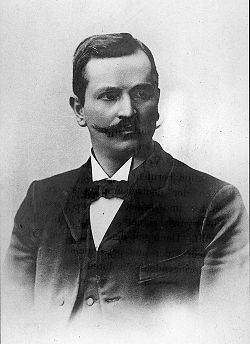Paul Drude
| Paul Drude | |
|---|---|

Paul Karl Ludwig Drude
|
|
| Born |
July 12, 1863 Braunschweig, Duchy of Brunswick |
| Died | July 5, 1906 (aged 42) Berlin, Province of Brandenburg Suicide |
| Residence | Germany |
| Nationality | German |
| Fields | Physicist |
| Institutions |
Humboldt University of Berlin University of Giessen |
| Alma mater | University of Göttingen |
| Doctoral advisor | Woldemar Voigt |
| Doctoral students |
Paul Cermak Markus Lange |
| Known for | The Drude model |
Paul Karl Ludwig Drude (German: [ˈdʀuːdə]; July 12, 1863 – July 5, 1906) was a German physicist specializing in optics. He wrote a fundamental textbook integrating optics with Maxwell's theories of electromagnetism.
Born the son of a physician in Braunschweig, Drude began his studies in mathematics at the University of Göttingen, but later changed his major to physics. His dissertation covering the reflection and diffraction of light in crystals was completed in 1887, under Woldemar Voigt.
In 1894 Drude became an extraordinarius professor at the University of Leipzig; in the same year he married Emilie Regelsberger, daughter of a Göttingen lawyer. They had four children. In 1900, he became the editor for the scientific journal Annalen der Physik, the most respected physics journal at that time. From 1901-1905, he was ordinarius professor of physics at Giessen University. In 1905 he became the director of the physics institute of the University of Berlin. In 1906, at the height of his career, he became a member of the Prussian Academy of Sciences. A few days after his inauguration lecture, for inexplicable reasons, he committed suicide. Drude was survived by his wife and four children.
...
Wikipedia
